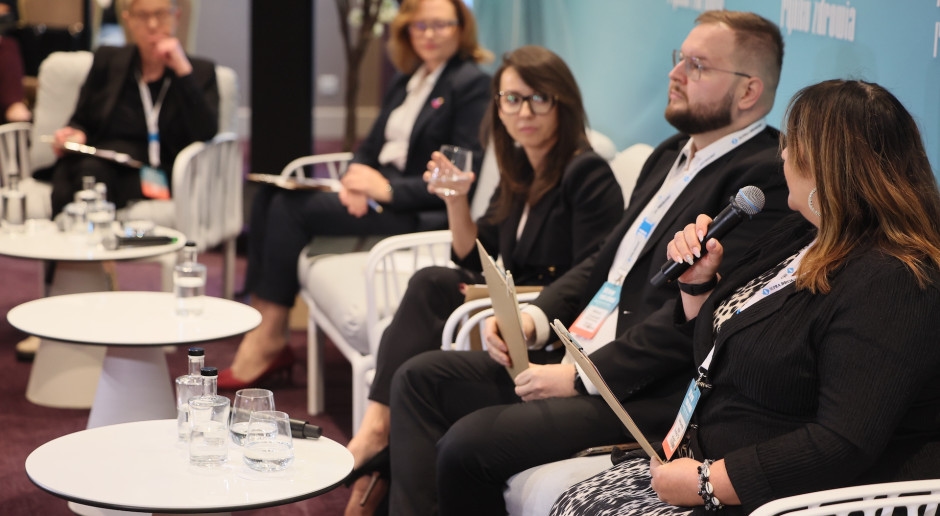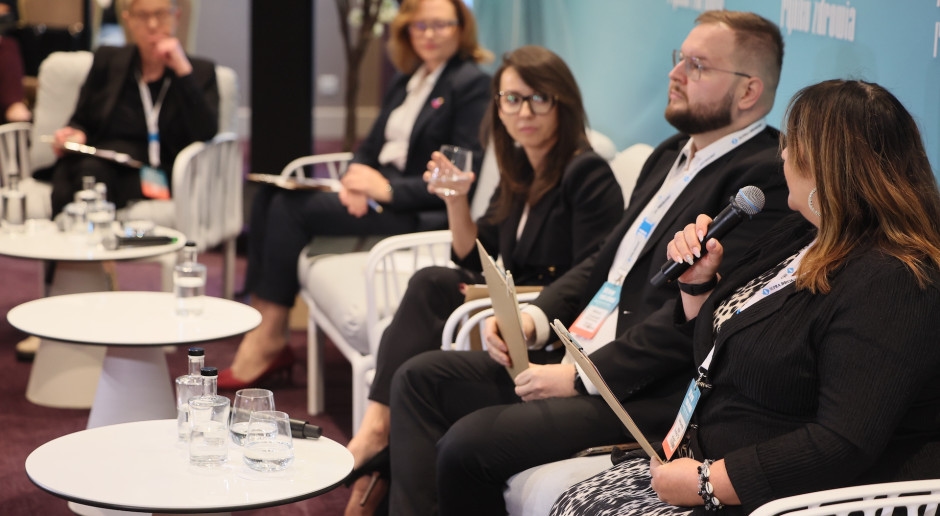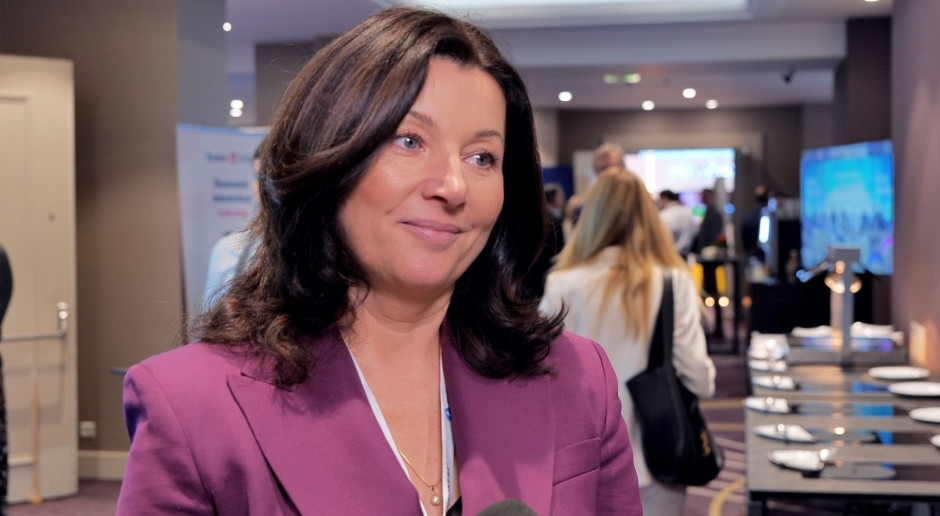Innovations in Oncology: "Combining Expensive Therapies Will Be a Major Challenge"

- Participants of the session "Oncology - availability of treatment in selected forms of cancer" during the 21st Health Market Forum discussed, among others, progress and innovations in oncology
- For the first time in decades, a new therapeutic option has emerged for patients with lower-grade gliomas: a molecularly targeted drug, said Prof. Barbara Radecka.
- The combination of bispecific antibodies with tyrosine kinase inhibitors in the first line of treatment brings excellent results in the treatment of patients with lung cancer with a mutation in the EGFR gene - pointed out Dr. Maja Lisik-Habib
- The increasingly bold associations of very expensive therapies that appear in oncology are a challenge for decision-makers and public payers in EU countries now and will be in the future - emphasized Mateusz Oczkowski
"Recent years have brought great progress in the reimbursement of modern cancer therapies in Poland. Currently, in many areas, there are no differences between what is available in our country and what is included in treatment algorithms," said Prof. Barbara Radecka, head of the Oncology Clinic with a Daily Section at the Opole Oncology Center named after Prof. Tadeusz Koszarowski, during the session "Oncology - Access to Treatment in Selected Forms of Cancer" as part of the 21st Health Market Forum.
"Progress is less visible in niche cancers, which is due to the fact that not many clinical trials are being conducted. Therefore, we have to wait many years for new therapies. This was the case with gliomas, tumors originating from brain tissue, among which we can distinguish very aggressive ones with short survival times, and those of lower malignancy, in which survival can be measured in years," she pointed out.
"For this second, very narrow group of patients, a new therapeutic option has emerged – molecularly targeted treatment targeting an enzyme present in glioma cells, associated with the production of substances that promote cell division. Thanks to this drug, we can slow the progression of the disease and more than double the time to progression, a result rarely seen in oncology," the professor emphasized.
"It's worth noting that in Poland, there are approximately 1,800 new diagnoses of various gliomas each year, and only one-tenth of this group could benefit from the aforementioned therapy . Therefore, we're dealing with a niche cohort. The drug was registered in the EU very recently, so it will be some time before it's available to Polish patients," noted Professor Radecka.
Lung cancer. "We're starting to combine drugs with different mechanisms of action."Dr. Maja Lisik-Habib , head of the Department of Proliferative Diseases at the Nicolaus Copernicus Voivodeship Multi-Specialty Center for Oncology and Traumatology in Łódź, recalled that recent years have brought enormous progress in the treatment of lung cancer. For one of its subtypes, non-small cell lung cancer (NSCLC), the last decade has seen the highest number of innovative molecules registered, including molecularly targeted therapies.
"They have revolutionized the treatment of this cancer, affecting it at all stages of advancement. Up to one-third of patients now survive for five years or more, whereas previously, median survival times were measured in months . Therefore, we can say that in some patients, we are able to transform a potentially fatal disease into a chronic one. This means long periods of disease control and the possibility of patients functioning relatively normally in their family, social, and professional lives," said the specialist.
She pointed out that molecularly targeted therapies can be used in cancer subtypes where specific molecular abnormalities occur in tumor cells. These therapies form the basis for personalized treatment, tailored to the individual patient. The first molecularly targeted drugs, first-, second-, and third-generation kinase inhibitors, targeted abnormalities in the EGFR gene, with the third-generation drug, osimertinib, remaining the standard for this group of patients for years. This treatment provided patients with very long periods of disease control and overall survival benefits.
"We are now moving further: we are beginning to combine drugs with different mechanisms of action , not only molecularly targeted ones, but also chemotherapy, conjugates, and bispecific antibodies . The standard of treatment in this group has changed – it is now intensified from the first line, either with chemotherapy or with innovative bispecific antibodies in combination with tyrosine kinase inhibitors . Median survival with this intensive combination treatment is 10-12 months longer compared to osimertinib monotherapy, and progression-free survival is 7 months longer," explained Dr. Maja Lisik-Habib.
She added that bispecific antibodies are a rapidly developing branch of anticancer therapy. These drugs inhibit two signaling pathways in cancer cells, crucial for cell survival and tumor progression (classical monoclonal antibodies inhibit only one pathway). Bispecific antibodies can also bind two receptors—one on the cancer cell and one on T lymphocytes—which triggers an immune system response to fight the tumor. These drugs overcome resistance mechanisms that arise with previous treatment methods.
"There is no modern treatment without molecular diagnostics." What about the patient's path?Aleksandra Wilk, director of the Lung Cancer Section of the To się Leczy Foundation, emphasized that we will not be able to tailor modern treatment to the patient without molecular diagnostics.
"We have the resources, we have the appropriate tests, but unfortunately, patients lose a lot of time on the diagnostic path leading to treatment, which is crucial in lung cancer. On average, it takes 3-6 months , but there are patients for whom this time is as long as 10 months . And these are not isolated cases. This shows that although we have modern technologies at our disposal to treat lung cancer, the availability of molecular diagnostics remains a challenge ," she noted.
"So how can we speed up and streamline the diagnostic process? Patients need to have their samples collected accurately for testing in a certified laboratory. Currently, however, there are cases where samples collected from a patient during surgery are sent for testing to an external facility six weeks after the procedure, a time when the patient should have been treated long ago. We are also waiting for a simultaneous referral that will allow pathologists to quickly redirect the samples for molecular testing. We can overcome many organizational barriers very quickly, but we still can't overcome them," said Aleksandra Wilk.
"The same is true for Lung Cancer Units . We all know that organ units for lung cancer need to be established, but even though we've been talking about it for years, they still aren't in the system. Meanwhile, LCUs will best streamline the diagnostic and therapeutic pathway for patients. They will ensure not only timely delivery but also comprehensiveness and quality of lung cancer diagnosis and treatment in Poland," she emphasized.
From registration to reimbursement. How long do we wait for drugs to become available?Mateusz Oczkowski, deputy director of the Department of Drug Policy and Pharmacy at the Ministry of Health, referred to the time elapsing between drug registration and its reimbursement in Poland.
"In 2025, we've already had four reimbursement announcements, and it's clear that the overall time from registration to reimbursement has lengthened . But that's not because we at the Ministry of Health are working slower. On the contrary, we're working faster by an average of 60 days, while for pharmaceutical companies, this time has extended by an average of 300 days ," said Director Oczkowski.
"This may be due to the fact that many non-oncological indications have emerged this year, while oncological indications are generating the most interest. Companies are not holding back on submitting reimbursement applications for these indications, likely because new treatment lines are emerging. Therefore, we have a situation where the multitude of non-oncological indications has caused the time from EMA registration to reimbursement in Poland to increase from approximately 1,200 to approximately 1,500 days. At the same time, the 300-day application processing time at the Ministry of Health has dropped to 240 days ," he explained.
"What can we do about this? The answer seems to be an amendment to the Reimbursement Act , which includes solutions designed to remove the barrier to submitting reimbursement applications. However, we cannot influence the decisions of pharmaceutical companies regarding the order in which their innovative drugs appear in individual countries. This is especially true since we spend the least in Europe on healthcare, and our reimbursement budget is also rather unimpressive compared to other expenses. Therefore, we are unlikely to improve this situation," he argued.
"Regarding maintaining the reimbursement trend, the actions of the Department of Drug Policy and Pharmacy at the Ministry of Health remain unchanged. It's easier, of course, to make decisions if competition for a given drug already exists. It's more difficult if it's a new line of treatment. However, as the years go by, it's getting easier, as therapeutic gaps are increasingly filled," he noted.
" The challenge for decision-makers and public payers in EU countries is, and will continue to be, the increasingly bold associations of very expensive therapies that are emerging in oncology . It seems that we will need to prioritize greater competition between new therapies, not just between original and generic drugs. We must seek such solutions, which – I hope – will be included in the document of the new national drug policy," Mateusz Oczkowski clarified.
Non-reimbursed drugs. "Even a wealthy person turns out to be poor."Marta Bednarek , legal director of the Rak'n'Roll. Win Life! Foundation, addressed situations in which a patient needs a drug that is not reimbursed in Poland.
"There will always be a time lag between the registration of a drug and its reimbursement, and some patients will always be told by their doctor that the therapy that is their greatest hope is not yet reimbursed. Such a drug, of course, costs money. In our daily practice, we pay from several hundred to tens of thousands of zlotys for its administration. One of our patients took a medication for three weeks that cost 25,000 zlotys per dose. Faced with such costs, even a well-off person becomes impoverished," noted Director Bednarek.
"Additionally, no one can afford treatment in public hospitals in Poland, even if they're a billionaire. They must first register with a public benefit organization that conducts this type of fundraising, enter into an agreement with the hospital pharmacy, and make a specific donation – only by following this path does the path to unreimbursed therapy open. However, the number of patients who pay for their treatment through foundations is significantly smaller than the number of people who need to initiate fundraising efforts. It's worth noting that over half of our patients taking unreimbursed medications recover. This shows that this opportunity to access medications that are not yet reimbursed is very valuable," she said.
Pediatric oncology is "losing" in programs and grantsAnna Apel , president of the Foundation for the Rescue of Children with Cancer, drew attention to research and innovation in pediatric oncology, which is an important pillar of the foundation's activities.
"The cure rate in pediatric oncology exceeds 80 percent , but the remaining 20 percent is important to our foundation. That's why we focus on research and innovation. Pediatric oncology is underfunded – there are insufficient funds for research and development in this field of medicine. Each year, 1,200 cancers are diagnosed in children, which represents only 0.8 percent of all cancer diagnoses in the country. For this reason , pediatric oncology is "lost" in various programs and grants," she explained.
"Our first grant program was established three years ago with a budget of PLN 8 million, and an example is a study conducted within it on improving diagnostics in children with a predisposition to cancer who are already undergoing oncological treatment. We have also launched numerous partnerships as part of the program, for example, we will be signing an agreement with the University of Cambridge later this year. We also secured a PLN 26 million grant from the Medical Research Institute (ABM) in collaboration with the Medical University of Wrocław and the Medical University of Łódź. This grant will cover research on liquid biopsy for monitoring residual disease in pediatric oncology," said Anna Apel.
Copyrighted material - reprint rules are specified in the regulations .
rynekzdrowia
















